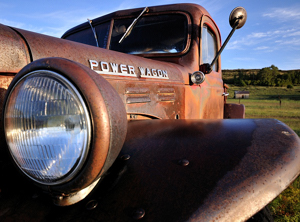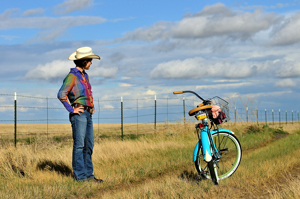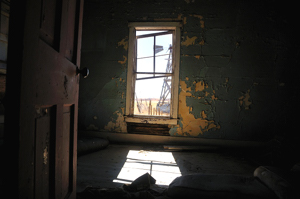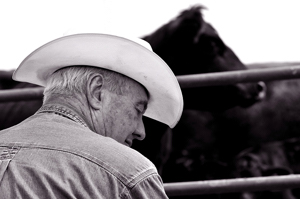|
November 8, 2009 The Battle of Hi-Lo
The Milagro Beanfield War – John Nichols’ novel and Robert Redford’s film are both classics – pits a simple people’s age-old ways against a well-defined future at odds with the past. The people are poor and Hispanic, the setting a thinly disguised Taos of 40 years ago. Redford was right to move it to Truchas, for Taos was much smaller when Nichols moved there and this is the story of a close-knit village.

Today a similar struggle has emerged in Hi-Lo, 100 miles east of Taos on the edge of the plains. Local families have grown through generations on sprawling ranches pieced together from the fragments of failed homesteads. From father to son to grandson and on (the daughters marry another family’s sons), the people – call them the heritage families – have known from birth that they can always live here and support themselves by raising cattle on the grass of their family land.
Tucked away in a beautiful but remote corner of New Mexico, isolation has given the people their own little pocket of the world, virtually unnoticed by the universe beyond its borders. In their eyes, change is their enemy.
The heritage families are scared, with good reason. In the 1920s, Hi-Lo was a booming town of 3000 with railroads to carry the cattle to market. By 1999, the railroads were long gone and the population was down to 160. The Hi-Lo School, K through 12, had an enrollment of 225 as school buses brought children to town from the ranches and surrounding villages. Ten years later, the school population is 90. Graduating classes have been as small as four students. The struggle to save the school is the struggle to save the community.
The heritage families have kept a tight grip on control of the school. The school board has hired superintendents and chased them off in cycles of two years or less, vigilantly preserving the old ways – the only ways they’ve ever known.

The problem is finding a way to increase the school population while resisting change. Though heritage families have welcomed daughters returning with child from the freshman year of college, they have not been able to arrest the rapid dive in school population. Except along belts within ten miles of an interstate highway, the population of the plains is lower today than it was a century ago: Hi-Lo is not alone in this experience. Many towns have died; more will follow.
There is one available source of increased population and vitality: newcomers, refugees from the cities and suburbs, educated people who move to the area for the beauty and simple life. They bring new interests, tastes, experiences, and values – including a love of the landscape and life in a small community.
Rather than welcome the newcomers with smiles, greetings, and open arms, the fear of change – fear of the new, fear of the future – keeps the old and the new at arm’s length. The heritage families keep a tight fist – a death grip – on the school and the land, afraid of the change represented by the newcomers. Fighting for the survival of their community, they’re apparently unable to see that they’re strangling themselves, for without change the school is dying. Without a school, there is no community.

In The Milagro Beanfield War, longtime residents fought total destruction of their way of life by a proposed resort and golf course. In Hi-Lo, longtime residents resist newcomers attracted by the very way of life heritage families hold so dear.
Thus the Battle of Hi-Lo. Plains communities have been reborn and found new vitality. It can happen. If it happens for Hi-Lo, it will be a shift in direction. It will be a change.

comment
|